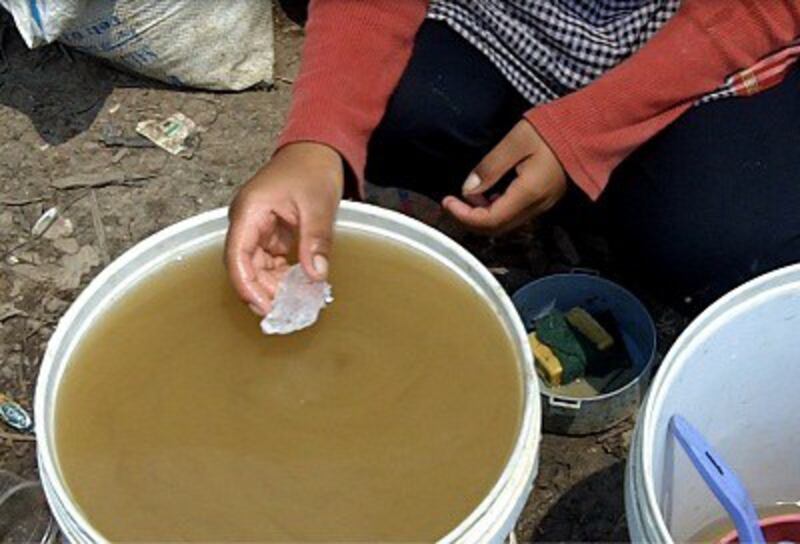Residents of a village in the middle of Cambodia’s Tonle Sap “Great Lake” live surrounded by water, but don’t have enough access to clean water for drinking, cooking, and washing.
The Tonle Sap, a combined lake and river system that swells in the rainy season to form Southeast Asia’s largest freshwater lake, has for generations supported fishing communities living in floating villages of moored houseboats.
But the silt deposited by the flow of the Mekong River, which nourishes the Tonle Sap’s abundance of fish that form a key source of food for millions of Cambodians, makes its brown, muddy waters unsuitable for daily use by households.
In Peam Ta Our, a floating village in Puok district some 20 miles (30 kilometers) from the tourism hub of Siem Reap, residents have no access to other water sources in the dry season and are forced to turn to Tonle Sap water for drinking, cooking, and laundry.
Resident Keng Chin said the Tonle Sap water is too dirty even to wash clothes with.
“We are facing water issues in our village. It is miserable,” she said.
“I want clean water the way other people want gold.”
Some who take the risk to drink and wash clothes with Tonle Sap water are paying a high price with diarrhea and skin rashes from chemicals used to treat the water—problems compounded by the village’s lack of a health center.
“What we need is clean water and a health center,” Keng Chin said.
Buying clean water
During the wet season, residents can get clean water from nearby ponds and wells, but during the dry season villagers have to buy bottled water.
Keng Chin pays at least 3,000 riel (U.S. $0.75) every two days to buy clean water, a significant amount in Cambodia where the average income is around U.S. $1 a day.

Those who can’t afford to buy water use chemical tablets to treat lake water before washing clothes in it, but it makes the skin itchy, she said.
Villager Chheang Sarith said some residents even drink the Tonle Sap water without boiling it.
“Some villagers are using chemical treatment to purify the water but some villagers drink water that hasn’t even been boiled,” he said.
“Some rich villagers who have boats go to buy water because they can’t use this water.”
But he himself can’t avoid using dirty water and most of the village has to use it toward the end of the dry season, from March through May, he said.
Health concerns
Deputy village chief Ly Moeung said he is concerned with villagers’ health because using dirty water is giving residents skin problems and the village has no access to a health center.
“I am worried about the villagers’ health because of the use of dirty water,” he said.
“I have requested the government and NGOs to help us out, but there’s no solution,” he said.
Last year two residents died of diarrhea, and using dirty water has gotten many residents sick, Chheang Sarith said.
Villagers say that they have lacked a health center for generations, and have appealed to the authorities and NGOs to build a floating health center for the villagers, but no one has offered help.
Transportation to the nearest health center, which is 11 miles (17 kilometers) from the village, costs about 15,000 riel (about U.S. $4.00), residents said.
Reported by Hang Sabratsavyouth for RFA’s Khmer Service. Translated by Samean Yun. Written in English by Rachel Vandenbrink.
